Stay in the know on all smart updates of your favorite topics.
Amsterdam and Haarlem launch groundbreaking sustainable artificial turf pitch innovations
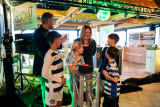
The pioneering innovations were presented of the Scale Up Future-proof artificial turf pitches project, a collaboration between Amsterdam and Haarlem focused on sustainable artificial turf pitches. Over the next few years, more than 250 sports pitches in both cities will be transformed into circular, energy-generating and climate-adaptive sports venues. These artificial turf pitches can not only generate and store energy, but also involve smart water management. An approach that is globally relevant for urban sports infrastructure.
Three consortia collaborate on the sport pitch of the future
The three selected consortia Antea Sport, EnergieVeld and GOO4iT together comprise more than 15 market players. They join forces within this innovation partnership, where there is room for long-term collaboration, co-creation and scalable innovation. The pioneering solutions will make it possible to cool down sport pitches on warm days, help dispose of and collect rainwater, make the pitches more pleasant for the users and possibly even generate energy for the surrounding area. Find out how these innovations are shaping the sport pitch of the future here.
Two municipalities: joint procurement
The Scale Up Future-proof artificial turf pitches project is a unique collaboration between two municipalities and market players. The municipalities jointly procure pooling their purchasing power and use an innovation partnership to challenge the market to test and scale up innovative and sustainable solutions. In doing so, the solutions are also scalable and transferable to other cities in the Netherlands and Europe.
From prototype to pilot fields
The first prototype fields will be constructed in Amsterdam and Haarlem in 2026, in different capacities and combining multiple innovations, where they will be extensively tested and monitored for a year. Successful concepts are then scaled up to full-scale pilot pitches and tested and monitored for another year. This will form the basis for the new standard of sustainable sports pitches, with potential for adoption in other cities around the world. At the same time, existing pitches are already being improved with the most sustainable solutions available, making an immediate impact from the start. The project thus shows how cooperation between municipalities and market players can lead to innovative, climate-proof sports infrastructure with international relevance.
Join us
This project provides cities worldwide a blueprint for sustainable, smart, and future-proof artificial turf pitches. Interested municipalities and industry partners can get in touch and subscribe to our news updates by sending an e-mail to: sportveldvandetoekomst@amsterdam.nl.
10. Health

Most important causes of death worldwide (Source: The Lancelet, le Monde)
This is the 10th episode of a series 25 building blocks to create better streets, neighbourhoods, and cities. In this post, I mainly focus on health problems which are directly related to the quality of the living environment
Are cities healthy places?
According to the WHO's Global Burden of Diseases Study, 4.2 million deaths worldwide each year are caused by particulate matter. The regional differences are significant. Urban health depends on the part of the world and the part of the city where you are living. More than 26 million people in the United States have asthma and breathing problems as a result. African-American residents in the US die of asthma three times as often as whites. They live in segregated communities with poor housing, close to heavy industry, transportation centers and other sources of air pollution.
Globally, the increasing prosperity of city dwellers is causing more and more lifestyle-related health problems. Heart disease, and violence (often drug-related) has overtaken infectious diseases as the first cause of death in wealthy parts of the world.
The Netherlands
Very recently, Arcadis published a report on 'the healthy city'. This report compares 20 Dutch cities based on many criteria, divided over five domains. The four major cities score negatively on many aspects. In particular: healthy outdoor space, greenery, air quality, noise nuisance, heat stress and safety. Medium-sized cities such as Groningen, Emmen, Almere, Amersfoort, Nijmegen, and Apeldoorn, on the other hand, are among the healthiest cities.
In Amsterdam, the level of particulate matter and nitrogen dioxide (NO2) in 2018 exceeded World Health Organization standards in many streets. The GGD of Amsterdam estimates that 4.5% of the loss of healthy years is the result of exposure to dirty air.
Collaborative measuring air quality
In various cities, groups of concerned citizens have started measuring the quality of the air themselves. A professional example is the AiREAS project in Eindhoven. An innovative measuring system has been developed together with knowledge institutions and the government. Sensors are distributed over the area of the city and the system provides real-time information. The AiREAS group regularly discusses the results with other citizens and with the city government. The measurement of the quality of the air is supplemented by medical examination. This research has confirmed that citizens in the vicinity of the main roads and the airport have an increased risk of mortality, reduced lung function and asthma.
The AiREAS project is linked to similar initiatives in other European cities. Occasionally the data is exchanged. That resulted in, among other things, this shocking video.
Future?
Could the future not be that we are busy doing the obvious things for our health, such as walking, cycling, eating good food and having fun and that thanks to wearables, symptoms of diseases are watched early and permanently in the background, without us being aware of it? The local health center will monitor and analyze the data of all patients using artificial intelligence and advise to consult the doctor if necessary. An easily accessible health center in one's own neighborhood remains indispensable.
Follow the link below to find an overview of all articles.
Smart building inside and out

Day and night, 114 sensors are collecting data about the use and occupation of the facilities at H20 Esports Campus in Purmerend. Such data can be of great interest to plan work more efficiently and cost effectively. Partners of AMdEX, an Amsterdam Economic Board initiative make sure data is exchanged between trusted parties only. And that any conditions for access and use are enforced.
How many people go in and out a building throughout the day? Do they prefer specific elevators? Which toilet areas are most used? Are bins and soap dispensers full? Facility managers and cleaning companies love that type of information. Unoccupied areas do not need to be serviced as frequently as busy ones. The Esports Campus, an event location for businesses and private parties, was keen to share the sensor data in a safe and trustworthy manner. The entrepreneur reached out to the team of our AMdEX initiative, via the Data Sharing Coalition.
Ready for it
For AMdEX, the request from Esports Campus came at exactly the right time. Previously, the field lab at the Marineterrein in Amsterdam proved how environmental and liveability data can be accessed and shared in a trusted environment – after the data owner and data user had agreed on simple terms. “We were ready for a more complicated case,” says Hayo Schreijer (Dexes), one of the founding partners of AMdEX. “The case at Esports Campus is a mix of private and public data, collected in a private space and to be shared over the Internet. Also, a lot more parties would be involved than in the previous Marineterrein case.”
Endorsing partner KPN
KPN is AMdEX’ endorsing partner for connectivity and network infrastructure. KPN’s infrastructure could enable this innovative entrepreneur to collect and share this data reliably with his business partners. Carolien Nijhuis is EVP Internet of Things and Dataservices at KPN. She says: “This smart building project is next level complexity. It combines all the issues we think are important. Safe and trusted exchange of data is necessary to solve the bigger issues in our society. In this project, KPN provides interoperability and connectivity according to European standards of privacy and security.” It is tempting to think that data exchange is all about technology. It is not. “Besides being innovative, using professional technology, data exchange is very much about legal and organisational issues”, says Schreijer.
New terms and conditions
The Esports Campus pilot ran in parallel with a next phase of the field lab at the Marineterrein. Tom van Arman (Tapp), says: “At Marineterrein we measure environmental factors and occupancy of the public space: water quality, temperature, numbers of people. Esports is a private space that collects more personal and commercially sensitive data. We had to consider new terms and conditions in the agreements with all parties involved. We also included the principles of the Tada Manifesto, that prescribe safe, inclusive sharing and usage of data.” Collecting data inside a building results in whole new datasets to play with.
Prototype for all-in-one app
This summer, a milestone was reached: a prototype of Facility Apps, the all-in-one app solution for cleaning and facility management. Data from the Esports Campus is made available to the cleaning partners through this app, allowing them to plan the work more efficiently. The data in the app is contained in a ‘Solid Pod’, a decentralised data store. When data is stored in someone’s Pod, they control which people and applications can access it. The AMdEX layer verifies the identity of parties that want to access the data and authorises them to do so – if they are certified parties. Schreijer clarifies that AMdEX does not ‘see’ the data. It tells systems whether access or usage of data is allowed and makes these decisions auditable. Nijhuis also emphasises that KPN enables the technical data exchange and has no access to the actual data. The next step is to evaluate the app with the users.
Great potential for smart cities
This pilot has shown that private data can be shared reliably between private partners. Combined with the results from the public space of Marineterrein, all three partners see great potential for smart city applications. City planning based on actual data, more efficient energy management of buildings or even industrial areas, innovation in sustainable logistics. “Especially when we all work together,” concludes Nijhuis. “If you run alone, you go faster, but together you go farther.”
Text: Karina Meerman
7 smart city summer tips
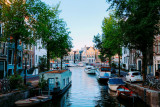
Summer is my favourite season in Amsterdam! There are so many things to do, it’s sometimes hard to choose where to go. To make your lives a bit easier, I curated a list of smart city exhibitions, activities and experiences from our partners and community. Zigzag across the city and experience the future of the energy systems, water management and food in urban areas. Enjoy!
1. Energy Junkies exhibition at Nemo The Studio
Our dependence on fossil fuels and the effects of our energy consumption on climate change are the focus of NEMO’s new exhibition for adults: Energy Junkies. NEMO invites you to explore the decisions that will determine our future. How would you transform our energy addiction into a healthy habit? Create your own carbon diet, choose the right medicines from the climate pharmacy and dream about a world where we are cured of our energy addiction. Visit Energy Junkies at NEMO’s Studio, the off-site location for adults on the Marineterrein in Amsterdam.
Energy Junkies is open from Wednesday – Sunday, from 12:00 – 17:30 until July 2023. Costs are € 7,50
2. Interactive installation Senses of Amsterdam at OBA Slotermeer
The municipality of Amsterdam is using more and more new technologies to make the city more liveable and safe. But what do these sensors actually measure? And what happens with the data they collect? What does this mean for the people of Amsterdam? The installation Senses of Amsterdam informs visitors about how sensors make Amsterdam a smarter city, what measurements are taken and how data is collected. The interactive installation by the Responsible Sensing Lab is currently exhibited at the public library (OBA) in Slotermeer.
Visit the interactive installation Senses of Amsterdam daily until 25 September 2022.
3. Study excursion about trends and innovations in Amsterdam’s cycling infrastructure
Yes, the Dutch and their bikes are inseparable! And Amsterdam is often cited as the cycling capital of the world. Are you interested in how Amsterdam is innovating in the areas of cycling and urban mobility? Join the study excursion organised by the Urban Cycling Institute and Bicycle User Experience (BUX). The two-hour excursion (by bicycle, of course!) brings you to key locations exemplifying Amsterdam’s innovative approach to cycling infrastructure and policy. You will meet internationally-oriented cycling experts and become part of a larger network of the Urban Cycling Institute and Bicycle User Experience (BUX).
The study excursions take place on Saturdays, August 13, 20 and 27 from 16:00 – 18:00. Costs are € 50,00 per person.
4. Exhibition Fluid Matter in the Architecture Centre of Amsterdam (ARCAM)
The Amsterdam water system regulates water levels and quality in one of Europe’s most densely populated areas. Due to the urban growth and climate change, the system will be increasingly strained in the future. This means that different design choices have to be made, but this situation also offers opportunities for new ways of dealing with water. What choices do we have? How can we design with the water? In the interactive exhibition Fluid Matter, you will discover this complex water system through scale models of four urban districts of Amsterdam: Houthavens/Haven-Stad, North/Schoonschip, City Centre/Kattenburg and IJburg/IJmeer.
Visit the Exhibition Fluid Matter from Tuesday – Sunday (13:00-17:00) until November 2022. Costs are € 4,00.
5. Johan Cruijff ArenA Innovation Tour
Take a tour into the world of innovations at the Johan Cruijff ArenA! With thousands of visitors during large events, the home of Ajax becomes a small smart city. Already recognized as one of the most sustainable stadiums in the world, the Johan Cruijff ArenA is also one of Amsterdam’s premier living labs for energy, mobility, security, and visitor experience innovations. The Johan Cruijff ArenA offers private tours showcasing innovative approaches and solutions for the stadium of tomorrow, ideal for team building events and (inter)national delegation visits.
The Johan Cruijff ArenA’s Innovation Tours last ~45minutes and can be booked by sending a request to tour@johancruijffarena.nl with “Innovation Tour” in the subject line. Costs are €24,38 excl. VAT per person, with minimum of 20 persons per group.
6. Floriade Expo 2022, Almere
Once every ten years, all the horticultural greats gather during the Floriade. Experts from all over the world come together to present green solutions that make our cities more enjoyable, beautiful and sustainable. With the theme of ‘Growing Green Cities’, more than 400 national and international participants showcase their latest green innovations, solutions and applications. From state-of-the-art solar roof tiles to amazing vertical façade gardens and from the best ways to grow tomatoes to the latest pruning techniques. You can see, taste and experience it all at Floriade in Almere.
The Floriade ) is open daily until 9 October 2022 from 10 a.m. to 7 p.m. For more information, visit their website. Costs are € 29,00.
7. Exhibition Makers of Noord by Waag
From large goods to small workshops, makers have always been an important part of Amsterdam Noord. Scattered throughout the district you will find individual makers and collectives, craftsmen and creative entrepreneurs. Their future in the city is under pressure, partly due to gentrification. On the other hand, the city heavily depends on these makers to cope with the energy transition and the enormous demand for housing. The good news is that many makers are still located in Amsterdam, and in particular in Noord. Who are these makers of Noord, what do they make, and how does this contribute to the city, the neighbourhood, and our lives? Get to know different makers from Noord and listen to their inspiring stories about re-use, sustainability and traditional craftsmanship.
The Makers of Noord exhibition can be visited in Museum Amsterdam Noord from Thursday – Sunday from 13:00 – 17:00 until August 27. Costs are €4,00.
Looking for more inspiring smart city events and experiences in and around Amsterdam? You can find them on the events and experiences pages on our platform! So do you have other tips for inspiring smart city activities not to be missed this summer? Share them with the community in the comments!
Onderzoek leidt tot oproep om de privacy van burgers te beschermen in de openbare ruimte
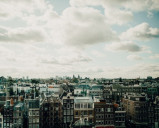
De Britse innovatiestichting Nesta lanceert vandaag een rapport met aanbevelingen voor het beschermen van de privacy van burgers in de digitale openbare ruimte. Nesta roept steden en lokale overheden op om lokale bevoegdheden slim in te zetten om het gat te vullen tussen de technologische ontwikkelingen en regulering op nationaal en Europees niveau.
In opdracht van de Cities Coalition for Digital Rights (CC4DR), waar Amsterdam deel van uitmaakt, heeft innovatiestichting Nesta onderzocht hoe Europese steden en regio's de privacy van hun inwoners beter kunnen beschermen, vooral als het gaat om gegevens die door de private sector worden ingewonnen. Denk aan eye-tracking-camera's die in billboards zijn ingebouwd, of incassobedrijven die gebruik maken van nummerplaatherkenning (ANPR-camera’s), of het gebruik van wifitracking door ondernemers.
Uit de praktijkvoorbeelden die het in rapport When Billboards Stare Back. How Cities Can Reclaim The Digital Public Space zijn verzameld, blijken gemeenten voorop te lopen met innovatief beleid voor sensoren in de openbare of semi-private ruimtes, dat de inzet van onder meer camera’s of geluidssensoren beperkt en ervoor zorgt dat het recht op privacy niet wordt ondermijnd. De gemeente Amsterdam heeft bijvoorbeeld om deze reden een meldingsplicht voor sensoren opgenomen in de Algemene Plaatselijke Verordening.
Het rapport laat zien dat nationale overheden de technologische ontwikkelingen in de publieke ruimte niet altijd goed kunnen bijbenen. Ook blijkt dat er onvoldoende Europese of nationale wetgeving is om technologische ontwikkelingen altijd goed te reguleren. Als er wetgeving is dan zijn de regels veelal abstract, waardoor ze in de praktijk niet altijd goed zijn toe te passen.
Daarom roept Nesta steden en lokale overheden op om het gat tussen de technologische ontwikkelingen en regulering op nationaal en Europees niveau op te vullen door slim gebruik te maken van bevoegdheden. Daarbij is het belangrijk dat steden privacy en grondrechten van hun burgers vooropstellen en tegelijkertijd verantwoorde nieuwe manieren van dienstverlening en innovatie van de private sector stimuleren. Zo wordt de persoonlijke levenssfeer van burgers ook beschermd in de publieke ruimte.
Aanbevelingen voor steden en lokale overheden
Het rapport bevat een aantal concrete acties die steden kunnen ondernemen om hun invloed en effectiviteit te vergroten bij het beschermen van de gegevens van hun inwoners en bezoekers.
• Maak effectief en slim gebruik van de bevoegdheden en instrumenten die steden al hebben zoals vergunningverlening en inkoop, zodat private partijen verantwoord omgaan met de inzet van sensoren in de publieke ruimte.
• Betrek private partijen, burgers en het maatschappelijk middenveld op een ‘bottom-up’ manier. Pak daarbij een communicatieve en bemiddelende rol.
• Zorg dat gegevensbescherming standaard onderdeel uitmaakt van het werk en integreer privacy expertise in de organisatie.
• Pas de Algemene verordening gegevensbescherming aan door het introduceren van een plicht om Data Protection Impact Assessments vooraf aan datacollectie in de publieke ruimte te melden bij lokale overheden en de toezichthouders.
• Zorg voor bewustwording over de positie van steden bij datacollectie door private partijen en lobby voor effectiever toezicht op sensoren in de fysieke publieke ruimte, en specifiek voor publieke ruimten die beheerd worden door private partijen.
Over CC4DR
De Cities Coalition for Digital Rights (CC4DR) is een internationaal netwerk van steden die samen optrekken op het gebied van digitale rechten en beleidsvorming. De coalitie is in november 2018 gelanceerd door Amsterdam, Barcelona en New York en inmiddels zijn zo’n 50 steden wereldwijd lid van de coalitie.
De coalitie zet zich in voor het bevorderen en verdedigen van digitale rechten in de stedelijke context door middel van juridische, ethische en operationele kaders om mensenrechten in digitale omgevingen te bevorderen. Gezamenlijke acties in netwerken zoals de CC4DR zijn essentieel om als gemeenten samen de uitdagingen aan te gaan die digitale technologieën met zich meebrengen. Gemeente Amsterdam is een van de oprichters van de coalitie en de uitdaging die aanleiding was voor het onderzoeksrapport van Nesta speelt ook in Amsterdam: sensoren en apparaten in de fysieke openbare en semi-private ruimte waarmee bedrijven persoonlijke gegevens verzamelen en waarmee het recht op privacy wordt ondermijnd. In samenwerking met andere steden en organisaties wordt samengewerkt om hier een antwoord op te vinden.
Lees het volledige rapport hier
Fotocredit: Sandro Gonzalez
Responsible Sensing Toolkit is live!

[ENGLISH BELOW]
Met trots presenteren we de Responsible Sensing Toolkit die vorige week werd gelanceerd. Deze Toolkit helpt gemeenten en organisaties die op een verantwoorde manier sensor-technologieën willen inzetten in de openbare ruimte.
Ben jij een stadsinnovator die zich bezighoudt met de inzet van sensoren? En wil je meer te weten komen over hoe je daarbij maatschappelijke normen en waarden als uitgangspunt kunt nemen? De Responsible Sensing Toolkit helpt je in zes stappen op weg.
Bekijk de Responsible Sensing Toolkit op de website van het Responsible Sensing Lab.
In de Toolkit vind je allerlei hulpmiddelen die je op weg helpen met jouw sensing-project. Bijvoorbeeld ons Responsible Sensing Toolkit Decision Canvas en video's waarin experts hun inzichten delen. Ook kun je je aanmelden voor een van onze workshops, zoals de Quickscan die je helpt bij het maken van een heldere roadmap naar een verantwoord en ethisch sensing-project. In sommige gevallen bieden we deze workshop gratis aan. Lees hier meer over deze workshop.
[ENGLISH]
We proudly present to you the Responsible Sensing Toolkit that was launched last week. This Toolkit empowers municipalities and organizations that want to implement sensing technologies for public space in a responsible manner.
Are you a city innovator thinking about deploying sensors? And do you want to learn more about how societal values could guide you in doing so? The Responsible Sensing Toolkit will help you on your journey in 6 steps.
Check out the Responsible Sensing Toolkit on the website of the Responsible Sensing Lab.
The Toolkit offers many resources that will help you on your way with your sensing project. For instance our Responsible Sensing Toolkit Decision Canvas or our videos in which experts share their insights. We also offer workshops, like a Quick scan that helps you set up a clear roadmap to a responsible and ethical sensing project. In particular cases this workshop is free of charge. Read more about this workshop here.
What role do Smart Cities play in a ‘post pandemic’ world?

PODCAST: In this episode of the Tech Data Tech on Stage podcast we discuss thorny 21st century issues like opting-in and opting out of public space, innovation outpacing governments and planners, hyper transparency = open source & open data, and “greening of IT” versus “greening by IT” . Awesome round table with Lieke Hamers of Dell Technologies, Tom van Arman of TAPP, Markus Pfundstein of LIFE electronic and Kees Tolsma of Tech Data. A great 30min session moderated by Danny Frietman and produced by Patrick Vogelaar
Stories from the living labs front line: Bureau Marineterrein and Johan Cruijff Arena
Listen on:
Meet the members of Amsterdam Smart City! Manon den Dunnen: ‘New technology fascinates me, but somehow I always end up seeing the dark side’
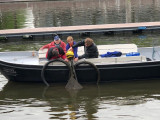
Manon den Dunnen is the Dutch police force’s strategic specialist on digital transformation and co-organiser of the IoT Sensemakers Community.
“The IoT Sensemakers Community has over 7,000 members worldwide. Our members share knowledge and experiences about Internet of Things (IoT) solutions and AI. IoT plays an important role in the smart city, as sensors are often used to make the city smarter. We believe you should do this in a responsible manner.”
“In the offline world, we fight discrimination and exclusion, but digital solutions introduce new forms of discrimination and exclusion that undermine our constitutional values. This may be caused by poorly chosen sensors (check out this viral video of the ‘racist soap dispenser’), the algorithms used in ‘smart’ applications or by data being unnecessarily collected and stored.”
“Sensemakers joined forces with Waag, Sensing Clues, Ombudsman Metropool Amsterdam and the City of Amsterdam to use sound sensors to analyse the noise nuisance in the city centre. At Marineterrein, a test area for creating liveable cities, we are now testing a sound sensor that can classify different types of noise. The sensor does not store data, but labels the different types of sound. A few years ago, we also tested sensors for measuring water quality, and we’re still testing indoor air quality.”
Tinkering with technology
“Every first Wednesday evening of the month, we meet at the Amsterdam Public Library (OBA) Makerspace to tinker with technology. People can work on their own projects and discuss their ideas with the likeminded, but they can also start learning with Arduino or 3Dprinting. We also organise lectures, for example with Schiphol Real Estate about smart buildings and with designer Anouk Wipprecht about robotic wearables like her Spider Dress. In January we’ll have interesting speakers making sense of the Metaverse, the latest hype, or isn’t it…?”
“We just celebrated our 10th anniversary and are working on a lot of fun little projects. I really love the diversity and creativity. Recently, someone built an insect recogniser. We had an older volunteer in a care institution who wanted to program games for the elderly on a care robot. That evening, a teenage boy came to learn how to build a robot car. They were helping each other. I love that serendipity.”
“A lot of technology is supplier-driven. But as a society—as buyers of these solutions—we are insufficiently trained to ask the right questions to truly assess this new technology and its long-term risks. We sometimes even forget to critically analyse the problem we’re dealing with, overlooking obvious low-tech or no-tech solutions. With my work for Sensemakers, I hope that we all become more critical and have a network we can consult.”
If you’d like to get in touch with Manon, you can find her on this platform.
This interview is part of the series 'Meet the Members of Amsterdam Smart City'. In the next weeks we will introduce more members of this community to you. Would you like to show up in the series? Drop us a message!
Interview and article by Mirjam Streefkerk
Marineterrein Amsterdam joins the Amsterdam Smart City network (in Dutch)

Het is nu officieel! Marineterrein Amsterdam en Amsterdam Smart City worden partners en gaan de samenwerking verder intensiveren. Het doel: kennis delen en samen aan de slag om tot oplossingen voor stedelijke vraagstukken te komen.
Amsterdam Smart City (ASC) zet zich vanaf het Marineterrein al jaren in voor open innovatie door als platform partijen en organisaties aan elkaar te verbinden. Kennis delen en samen aan de slag staan hierbij centraal.
Samenwerking
Een voorbeeld van zo’n samenwerking op het Marineterrein is het Responsible Sensing Lab, waarbij een aantal ASC-partners in de openbare ruimte experimenteren met verantwoorde detectiesystemen om bijvoorbeeld geluidsoverlast of drukte in kaart te brengen. Verschillende partijen brengen bij deze experimenten hun expertise bij elkaar om samen tot oplossingen te komen. De lessen die we daaruit leren zijn waardevol voor heel veel Smart City projecten.
Breder delen
‘Het Marineterrein bestaat uit een levendige community die zich bezighoudt met het oplossen van allerlei stedelijke vraagstukken’, zegt directeur van Bureau Marineterrein Liesbeth Jansen. ‘Er is op het terrein veel kennis aanwezig over nieuwe manieren van leren, wonen en werken, en door ons aan te sluiten bij het ASC-netwerk kan die kennis nu breder gedeeld worden. En andersom kijken we uit naar interessante samenwerkingen tussen het ASC-netwerk en Marineterrein Amsterdam Living Lab die onze community verder kunnen helpen.’
Leren in real life
Directeur van ASC Leonie van den Beuken ziet met de samenwerking veel kansen om nieuwe, innovatieve oplossingen in real life te testen. ‘Een van onze kernwaarden is leren door te doen. Het Marineterrein biedt een prachtig testgebied voor oplossingen die we in de praktijk willen uitproberen. We zijn daarom één van de partners in het Marineterrein Living Lab. Daarnaast staan wij beiden voor open innovatie ten behoeve van een leefbare stad. Aangezien het Marineterrein onze thuisbasis is, is het logisch om onze netwerken en ambities nog meer aan elkaar te verbinden.’
Why the City of Amsterdam developed its own crowd monitoring technology
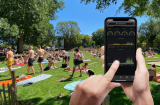
When the market couldn’t offer what Amsterdam needed, the city created its own technology solution in-house. This approach gives cities more control and can also help vendors build better products.
Update Intelligent Cities Challenge & Opportunities To Get Involved

The 100 Intelligent Cities Challenge (ICC) is a European Commission (EC) initiative that supports 136 cities with using cutting-edge technologies to lead the intelligent, green and socially responsible recovery. The goal is to accelerate ICC cities and their local ecosystems as engines for post-pandemic recovery, creating new jobs and strengthening citizen participation and wellbeing.
The Amsterdam Metropolitan Area, represented by Amsterdam Economic Board and Amsterdam Smart City (ASC), has joined the ICC as a mentor region. A key task for ASC is to connect and share best practices from the Amsterdam region with the ICC network.
Here are a few of the upcoming opportunities for ASC partners and community members who would like to get involved in the ICC:
- Sharing best practices during the 3rd ICC City Lab, May 18 – May 21: During this four day event, ASC partners have the opportunity to contribute to various knowledge and working sessions across a range of topics including: circular economy and Local Green Deals (LGD’s), energy efficient renovation, digitalization of government services, digital twins, and citizen participation.
- Contributing to Tech4Good Marketplace:Within the scope of ICC, the EC is developing a digital platform where cities can share their experience and recommendations for validated and deployed smart city solutions. During the April - June timeframe, ASC will collect transferable solutions and best practices from the Amsterdam Region which will be shared on the Marketplace.
- Advise on the development of the European Interoperability Framework for Smart Cities and Communities (EIF4SCC): Acknowledging the importance of interoperability for smart cities and communities, the EC contracted Deloitte and KU Leuven University to develop a proposal for a European Interoperability Framework. The aim of the EIF4SCC is to provide European local administration leaders with definitions, principles, recommendations (including practical use cases) and a common model that enables public service delivery across domains, cities, regions and borders. The first draft of the Framework is open for stakeholder consultation via the following survey until April 12.
For more information about ICC or any of the above points, please contact Cornelia Dinca, ASC International Liaison via cornelia@amsterdamsmartcity.com
'Pathways of hope' in onze publieke ruimte
Haastig zijn afgelopen jaar interventies in de publieke ruimte ontwikkeld en toegepast om de verspreiding van Covid-19 tegen te gaan. Hoe kunnen deze tijdelijke maatregelen in de openbare ruimte de structurele veerkracht van de buurt versterken?
Covid-19 maakte duidelijk hoe belangrijk onze gedeelde publieke ruimte is. Haastig werden afgelopen jaar interventies in de publieke ruimte ontwikkeld en toegepast om de verspreiding van Covid-19 tegen te gaan. Met stickers, hekken, geverfde cirkels, verkeersborden en digitale apps waarop op afstand de drukte in de stad af te lezen valt werd geprobeerd om stadsbewoners te verleiden tot social distancing. Al snel werden deze preventieve maatregelen vergezeld van nieuwe praktijken. Parkeerplaatsen boden tijdelijk ruimte aan groen en houten vlonders waarop de binnenstedelijke horeca en winkels hun werk in de buitenlucht konden voortzetten.
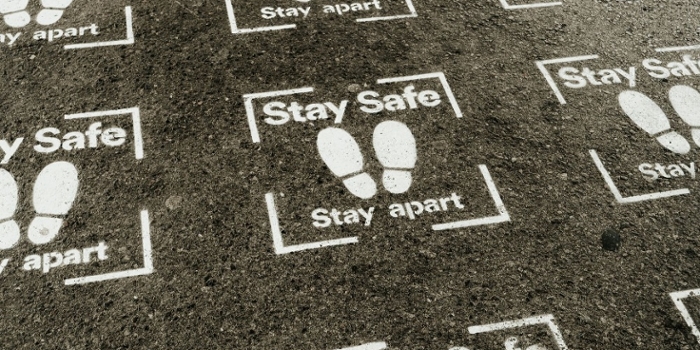
Foto: Ethan Wilkinson
Frank Suurenbroek, lector Bouwtransformatie van Centre of Expertise Urban Technology, en Martijn de Waal, lector Civic Interaction Design van Faculteit Digitale Media & Creatieve Industrie, over hun project 'Covid-19: Van preventie naar veerkracht'. Dit artikel is eerder gepubliceerd in HvA-magazine 'Bewogen Stad: Leren in crisistijd'.
Daarnaast toonden activiteiten die normaal achter gesloten deuren plaatsvinden zich plots in de buitenruimte. Gebruikers van shisha-lounges nestelden zich op stoeltjes voor de deur, sportscholen gingen lesgeven in de open lucht. Ook ontsproten er nieuwe sociale initiatieven zoals huiswerkklasjes in buurtcentra. Covid-19 leidde zo ook tot een experiment in het gebruik en de betekenis van onze gedeelde publieke ruimtes.
Van preventie naar veerkracht?
We weten echter nog weinig over de variëteit aan preventieve interventies in de publieke ruimte, hun werking en vooral ook de manier waarop die tijdelijke maatregelen ook de structurele veerkracht in buurten kunnen versterken. Afgelopen september kregen we een ZonMW-subsidie toegekend om dit te onderzoeken: Hoe kunnen ontwerpinterventies voor de 1,5 meter-samenleving in de publieke ruimte op buurtniveau ook bijdragen aan het versterken van maatschappelijke en ecologische veerkracht? Veerkracht gaat hierbij over de kwaliteit die de leefomgeving nu biedt, alsmede over de capaciteit in de omgang met de meer structurele sociale en ecologische uitdagingen van onze steden.
Delen gedurende de uitvoering
Covid-19 vraagt ook om snel handelen. Een centrale rol in ons project speelt de Community of Practice. Vijf gemeenten, twee woningbouwcorporaties, het PBL, ontwerpbureau UNStudio, social engineeringbureau The Beach, WandelNet en Pakhuis de Zwijger alsmede meerdere specialisten vanuit de HvA hebben zich in dit project verenigd. Covid-19 stopt bovendien uiteraard niet bij de landsgrenzen. Naast de Nederlandse partners heeft zich ook een kring van internationale kennisinstellingen aan het project verbonden: Harvard in de VS, The Bartlett School in Londen, University of Sydney en in Italië het netwerk City Space Architecture.
Preventieve ingrepen begrijpen
In de wetenschappelijke literatuur rondom veerkracht valt het handelen in crises uiteen in resisting (weerstand bieden), adapting (aanpassen), restoring (herstellen) en transforming.

Onderscheid in vier soorten handelingen in crisistijd
De preventieve maatregelen rondom Covid-19 passen overwegend in de categorieën resisting en adapting. Het gaat daarbij om tijdelijke oplossingen voor de problemen die nu spelen. Denk aan het plaatsen van hekken, het tijdelijk gebruik maken van parkeerplaatsen voor horeca en andere functies die niet langer binnen kunnen functioneren. Tegelijkertijd bieden deze ingrepen mogelijk ook de potentie voor meer transformatieve keuzes.
Zo zien we een aantal steden (Parijs, Milaan, New York) de crisis aangrijpen om een al langer levende mondiale visie in wording te versnellen om steden leefbaarder en inclusiever te maken. Deze visie raakt aan abstractere en meer toekomstgerichte perspectieven van veerkracht. Wat echter ontbreekt is inzicht hoe de huidige preventieve ingrepen ook de kansen en potentie van meer structurele transities van de stad kunnen bewerkstelligen.
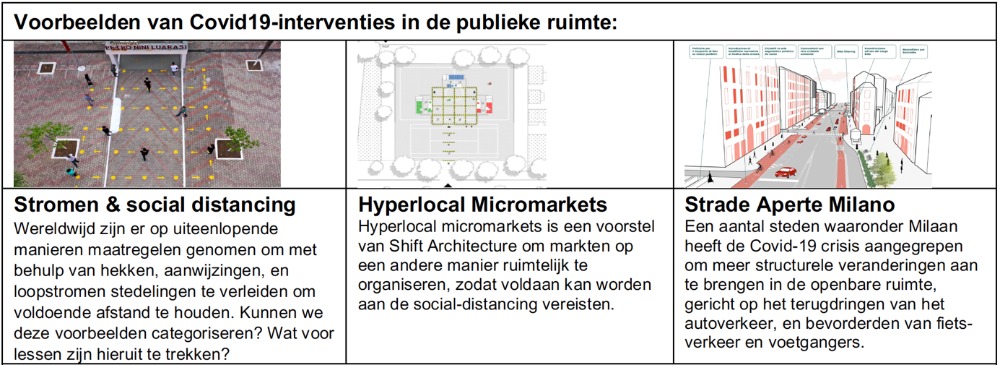
Voorbeelden van Covid-19 interventies in de publieke ruimte
Van resisting naar transforming?
Hoe kunnen die concrete interventies, investeringen en spontane ontwikkelingen die nu voor de resisting en adapting van de pandemie plaatsvinden ook de kiem leggen voor het vinden van oplossingen voor onze grotere sociale of ecologische problemen? Conceptueel: hoe kunnen interventies voor resisting en adapting meteen ook iets zeggen over concrete ontwerpoplossingen voor transforming? Natuurlijk kunnen we met ons project niet meteen al die grote problemen oplossen. Om het concreet te maken focussen we op het schaalniveau van de buurt en hanteren we een research through design-methodiek. Met ons onderzoek willen we niet voorschrijven hoe het moet, maar voorbeeldstellend en onderbouwd in beeld brengen hoe dat kan. Wat leren we van de Covid-19-interventies in de publieke ruimte om ook de veerkracht te versterken?
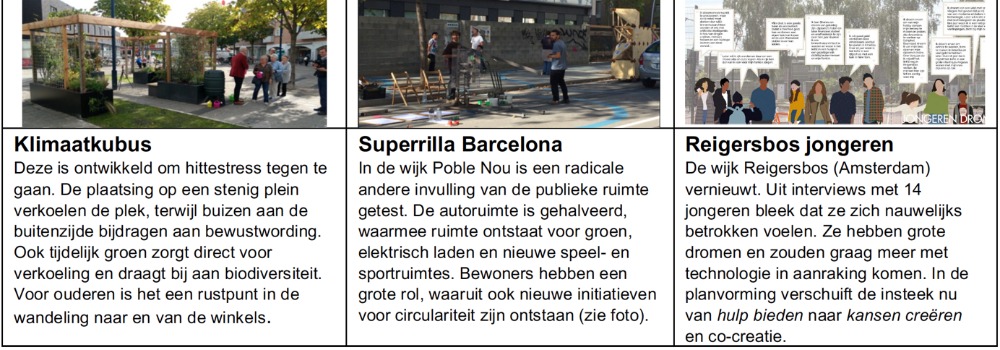
Voorbeelden van leerzame niet-Covid-gerelateerde interventies in de publieke ruimte
Dit is de data die we verzamelen:
- We brengen systematisch in kaart welke interventies in de openbare ruimte zijn ontwikkeld en toegepast ter preventie van Covid-19-besmettingen.
- We brengen met ons consortium in kaart welke (spontane) initiatieven op buurtniveau zijn ontstaan om de sociale effecten van Covid-19 te pareren.
- Daarnaast verzamelen we de verschillende typen concrete ingrepen die los van Covid-19 al bestaan om ook in sociaal-economisch kwetsbare buurten te werken aan klimaatverandering en leefbaarheid.
Deze data levert twee inzichten op. Het laat zien wat voor specifieke 'schade' Covid-19 heeft veroorzaakt, welke tekortkomingen aan het licht zijn gekomen en welke andere oplossingen dan gebruikelijk zich aandienden. Daarnaast levert de analyse van deze concrete sets interventies zicht op hun werkzame bestanddelen. Deze beschouwen we als de ‘bouwstenen’ en programma’s van mogelijkheden voor het research through design-deel van ons onderzoek. De ontwerp- en sociaalengineeringbureaus in ons consortium gaan met deze set ontwerpend onderzoekend verkennen hoe een nieuwe combinatie van deze bouwstenen tot ingrepen leiden die en preventief en transformatief zijn.
De coronacrisis hopen we daarmee niet alleen als een snel achter ons te laten situatie te beschouwen, maar ook als een natuurlijk experiment waarin nieuwe paden voor de toekomstige stad ontdekt kunnen worden. En hoe eerder we die in beeld kunnen brengen, hoe sneller we ook al gedurende de pandemie van onderop aan de structurele versterking van onze stad kunnen werken.
HvA-magazine Bewogen Stad: Leren in crisistijd
Bewogen Stad is een reeks van digitale tijdschriften over maatschappelijke kwesties in de Amsterdamse regio. Hier deelt Centre of Expertise Urban Governance en Social Innovation met een breder publiek waar HvA mee bezig is en biedt zij een plek voor verschillende geluiden uit het maatschappelijke debat. Lees het volledige magazine.
Green Deal - mogelijkheid voor gemeenten om energietransitie, CO2 reductie en innovatie te stimuleren.
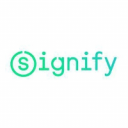
Frans Timmermans, Chef Klimaat van de Europese Commissie, lanceerde op 11 december de Europese Green Deal, het baanbrekende klimaatplan dat van Europa in 2050 het eerste klimaatneutrale continent in de wereld moet maken.
Met de Green Deal gaat Europa een ongekende uitdaging aan, die tegelijk ook nieuwe kansen biedt. Het eerste doel ligt al in 2030. Dan moet de CO2-uitstoot met 55 procent zijn teruggedrongen (versus 1990).
13 procent van het totale elektriciteitsgebruik schrijven we vandaag op het conto van verlichting – in 2006 was dat nog 19%. Met de totale omschakeling naar LED kan dat worden teruggebracht naar maar liefst 8 procent of bijna de helft in 2030. De missie moet dan ook zijn om LED-verlichting tot een algemeen goed en zelfs een verplichting te maken; niet alleen in de Benelux, maar ook zeker in Europa.
Ter illustratie: Als we vandaag zouden overgaan naar een totale ver-LED-ding van Europa, betekent dat over de periode 2006 – het jaar waarin werd opgeroepen om de gloeilamp wereldwijd uit te faseren – tot 2030 een besparing van 198 megaton aan CO2. Dat staat gelijk aan 267 elektriciteitscentrales of pakweg 50.000 (vijftig duizend!) windmolens.* De besparing voor Nederland alleen is 3,5 megaton aan CO2. Dat staat gelijk aan het elektriciteitsgebruik van drie miljoen huishoudens volgens de Nederlandse Licht Associatie en Fedet.**
Met de Green Deal ligt de weg open om de ver-LED-ding in Europa te versnellen. Dat is echt noodzakelijk en haalbaar: bijna 85 procent van alle lichtpunten in de Benelux kan nog vervangen worden door (connected) LED-lampen.
De voordelen voor gemeenten:
- Significante reductie van de CO2 uitstoot
- Energiebesparing
- Data gedreven onderhoud - transparant - veilig
- Veiligheid stad
- Toekomstbestendig - klaar voor digitalisatie
- Te integreren met een Smart City applicatie
- Eenvoudig beheer
Met het gebruik van de Green Deal kunnen gemeentes hen project laten subsideren als deze voldoet aan een aantal voorwaarden. Wij denken hier graag in mee.
Meer info over de Green Deal via de link.
Metropolitan Mobility Podcast met Maurits van Hövell: van walkietalkies naar het Operationeel Mobiliteitscentrum

“Voorheen werd er gewoon rondgebeld: ‘Wij zitten in de instroom van de ArenA. We hebben nu 20.000 man binnen. Hoe gaat het bij jullie op straat?’” In de achtste aflevering van de serie A Radical Redesign for Amsterdam, spreken Carin ten Hage en Geert Kloppenburg met Maurits van Hövell (Johan Cruijff ArenA). Hoe houdt je een wijk met de drie grootste evenementenlocaties van het land, bereikbaar en veilig? Ze spreken elkaar in het Operationeel Mobiliteitscentrum over de rol van de stad Amsterdam, data delen en het houden van regie. A Radical Redesign for Amsterdam wordt gemaakt in opdracht van de Gemeente Amsterdam.
Luister de podcast hier: http://bit.ly/mvhovell
Smart Health Amsterdam is looking for an intern Communication & Events
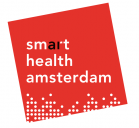
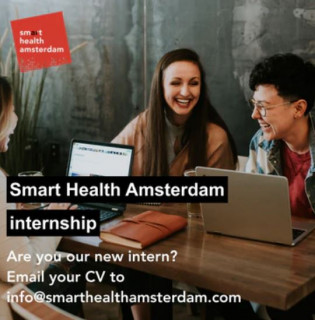
Looking for an internship where you can develop new skills in communications, marketing, PR and event management? Do you have an interest in how AI & data science can contribute to a healthier society and better medical care? Want to work as part of a fun and inspiring team?
As Amsterdam’s key network for data- and AI-driven innovation Smart Health Amsterdam (Gemeente Amsterdam & Amsterdam Economic Board) in #the #life #sciences and #health sector, we’re looking for an intern. Interested? Get in touch today.
https://smarthealthamsterdam.com/p/jobs-at--smart--health--amsterdam Smart
Metropolitan Mobility Podcast: De stad slimmer en schoner van goederen voorzien?
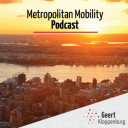
In deze podcast gaat Geert Kloppenburg in gesprek met Walther Ploos van Amstel en Carin ten Hage over digitale voorwaarden voor gezonde stadslogistiek. Luister hier de podcast: http://bit.ly/38ASVZ
Future Fitness Garden
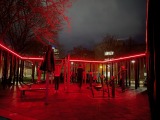
Getting fit and healthy again in 2021? Since the citywide lockdown, members of local sport-clubs have been forced outdoors. One of the most popular (outdoor) fitness areas on the Amsterdam waterfront has been the Marineterrein. In our latest project “Future Fitness Garden” we explore how smart lighting can remind us of safe distancing and capacity in public space during Corona.
Using algorithms we can anonymously detect proximity and density of people working out. For example if they come within 1,5 meters to one another the LED strips turn BLUE. If there are too many people occupying the area the LED will turn RED. This system gently reminds guests to respect each other’s space while sharing the future fitness garden.
Thanks to project partners Marineterrein Amsterdam. Compliments to AI genius Markus Pfundstein, Electrical Mechanical Wizard Werner Pfundstein
Aandacht voor klimaatverandering in het onderwijs
In gesprek met docent-onderzoeker Lisette Klok (HvA) over klimaat in het onderwijs
Hoe wordt er binnen het onderwijs aandacht besteed aan klimaatverandering? Docent-onderzoeker Lisette Klok (HvA minor Klimaatbestendige stad) spreekt over hoe de thematiek van klimaatverandering in hun opleiding terugkomt, wat de opleiding de studenten hierover wil meegeven en hoe zij zelf tegen deze thematiek aankijken. ‘Zij kennen de urgentie van het wereldwijde klimaatprobleem en weten dat we ons moeten aanpassen aan de klimaatverandering die gaande is.’
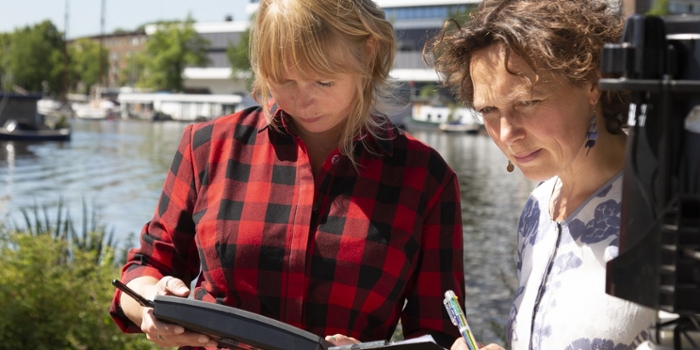
‘Bij de minor Klimaatbestendige stad van de Hogeschool van Amsterdam leren studenten alles over klimaatverandering, de gevolgen hiervan voor de stad en hoe stedelijk gebied klimaatbestendig ingericht kan worden. Klimaatverandering betekent meer extremen: heftiger regenval en meer hitte. Extreme buien leiden tot wateroverlast en waterschade. Hitte geeft gezondheidsproblemen en zet de leefbaarheid van steden onder druk. Ook droogte en zeespiegelstijging zijn thema’s binnen de minor. Om al deze nadelige gevolgen van klimaatverandering te voorkomen en prettig te kunnen blijven leven, moet de inrichting van het stedelijk gebied worden aangepast. De belangrijkste vraag binnen de minor is daarom: Hoe kunnen steden, wijken en straten klimaatbestendig worden ingericht rekening houdend met meer hitte, extreme regenval, droogte en overstromingen?
MINOR KLIMAATBESTENDIGE STAD
De studenten die voor deze minor kiezen doen dit, omdat zij weten dat er in de nabije toekomst veel werk verricht zal moeten worden om Nederland klimaatbestendig in te richten. Zij kennen de urgentie van het wereldwijde klimaatprobleem en weten dat we ons moeten aanpassen aan de klimaatverandering die gaande is.
MEETONDERZOEKEN IN DE EIGEN WOONOMGEVING
Naast theoretische kennis, gastcolleges en excursies, voeren studenten ook meetonderzoeken uit om temperaturen en neerslagpatronen in de eigen woonomgeving in kaart te brengen. Ook doen de studenten praktijkervaring op doordat zij een actueel klimaatbestendig project voor een echte opdrachtgever moeten uitvoeren. De meeste studenten vinden dit onderdeel van de minor het leukst. Gemeentes, waterschappen of adviesbureaus dienen vaak als opdrachtgever en de studenten oefenen in de rol van opdrachtnemer. Hierdoor proeven zij de sfeer die er in ‘de echte wereld’ hangt met de bijbehorende ‘officiële’ vergaderingen.
AAN DE SLAG MET UITEENLOPENDE VRAAGSTUKKEN
Ze werken daarbij aan veel verschillende vraagstukken: Wat zijn de meest urgente locaties om maatregelen te nemen met het oog op wateroverlast, droogte en hitte? Met welke inrichtingsmaatregelen kan een bepaalde wijk of straat klimaatbestendig ingericht worden? Hoe verhouden de baten van deze maatregelen zich met de kosten? Hoe zou een klimaatbestendig ontwerp voor een bepaalde buurt eruit kunnen zien? Hoeveel oppervlaktewater, waterberging, groen of groene daken zijn nodig om te voldoen aan de klimaatbestendige beleidsdoelen van een gemeente?
KLIMAATBESTENDIG ONTWERPEN
Het gewenste eindresultaat van zo’n praktijkopdracht is in de meeste gevallen een klimaatbestendig ontwerp van een gebied onderbouwd met een gedegen kwetsbaarheidsanalyse, kloppende argumentaties, juiste berekeningen en ondersteund door mooie visualisaties. Zo werken we in de minor samen met praktijkpartijen om verder te werken aan technische en ontwerp gerelateerde vraagstukken rondom klimaatverandering.’
STUDENTEN IN ACTIE:
Studenten zetten straten onder water
HvA-dak proeftuin voor 10.000m2 klimaatbestendige daken
Gezocht: verkoeling in Amsterdam
Studenten onderzoeken waterpasserende bestrating
CityFlows Launches City Analytics Startup
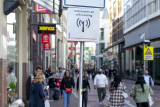
CityFlows is an EIT Urban Mobility flagship project bringing together a diverse consortium of partners to launch a state-of-the-art Crowd Management Decision-Support System (CM-DSS) to improve the safety and comfort of busy pedestrian spaces. The recent launch of City Analytics, a start-up licensing the CityFlows CM-DSS software to government authorities, represents a major project milestone. City Analytics will boost the quality of pedestrian spaces, a timely development as cities look for reliable tools that can help them respond to the Corona crisis. Find out more by reading this extended article below.
Background
The safety and comfort of pedestrian spaces influences the quality of life in cities, but crowding can limit these gains. In recent years, a few European universities and municipalities have developed techniques to actively monitor crowd movements and proactively manage crowded spaces using real-time decision support systems. These pilot programs have shown that effective crowd management can substantially improve the liveability and sustainability of densely populated urban areas. Yet, at the beginning of 2020, there was no state-of-the-art CM-DSS ready for large-scale deployment.
This is the challenge that a diverse consortium of partners set out to address in the EIT Urban Mobility project, CityFlows. The Amsterdam Institute for Advanced Metropolitan Solutions (AMS Institute) and its founding member Delft University of Technology (TU Delft), brought together researchers and practitioners in Amsterdam, Barcelona and Milan who have expertise in state-of-the-art sensor techniques, crowd management, governmental regulation, European privacy regulation, machine learning, data analytics and valorization of research output. This consortium consists of AMS Institute, TU Delft, as well as the city of Amsterdam, ALTRAN, Universitat Politècnica de Catalunya – BarcelonaTech (UPC), the city of Barcelona, ENEA, the city of Milan and AMAT.
Shortly after the project launched in January 2020, the partners experienced a massive set-back in the wake of Covid-19 emergency, with Milan being particularly hard hit. The initial timelines and scope of the project were challenged as large events were cancelled and tourist crowds disappeared. Despite these set-backs, the partners persevered, adapting to the new reality. In this article the partners share an update as the project reaches an important milestone.
Living Lab Projects
A key desired outcome of the CityFlows project is to boost the quality and accessibility of urban space through different living lab projects in the three partner cities of Amsterdam, Milan and Barcelona. Through these city-scale demonstrator projects, the CityFlows CM-DSS software developed by TU Delft and ALTRAN is being tested to illustrate the overall impact of the system and provide management strategies for various types of crowded spaces. These “living lab” projects are also integral to testing design assumptions and validating the software in different real-life contexts.
The first living lab project was planned at Amsterdam’s Johan Cruijff ArenA and was supposed to take place during the UEFA EURO 2020 soccer championship which has been postponed to 2021. The aim of this living lab is to showcase and evaluate the use of the CityFlows CM-DSS software during large sporting events. The software features a sensor system, including 2D sensors, that will be further built up using data from other sources. The system is fully operational and ready for testing once large sporting events can take place again. Additionally, the CM-DSS has also been adjusted for Covid-19 management, providing insights into levels of crowdedness and social distancing behavior in the area.
Similarly, the Amsterdam Covid-19 living lab represents an alteration to the original project which was supposed to manage crowds during the large-scale SAIL event that was cancelled. Instead, partners have adapted the operational crowd-monitoring system to monitor social distancing at several busy locations. Real-time data is produced and analyzed by city officials on a daily basis, helping to inform social-distancing measures and communications with the public through dashboards.
Meanwhile, the Barcelona living lab will produce simulations that predict the human behavior around Sagrada Familia. Data regarding flow dynamics will be collected primarily through RFID technology, providing the input for simulations which will eventually be used to redesign the pedestrian space surrounding Sagrada Familia. The pilot is currently in the final design stages and will be fully deployed in 2021.
The Milan Central Station living lab will be testing 5G technology through the set-up of a real-time crowd movement assessment system featuring highly sophisticated computer vision techniques. The municipality, ENEA and ALTRAN have designed a pilot using historical and real-time data collected by fixed and mobile sensors to feed the analysis of the crowd evolution inside the station. Moreover, the partners are developing an innovative 5G sensor system that analyzes and classifies pedestrian movements in CCTV images.
Launching City Analytics
The CityFlows consortium recently reached a key milestone with the launch of City Analytics. This start-up is a vehicle for turning the CityFlows CM-DSS into a license-based Software-as-a-Service (SaaS) software package available to managers of pedestrian spaces (i.e. public spaces, train stations, event grounds, shopping malls, schools). Compared to its main competitors, the City Analytics software package is hardware independent, cloud-based, highly scalable, GDPR-proof and above all, highly customizable to the user’s needs. In the coming year, City Analytics will further develop the business case, and also connect other modes of transport, including bicycle flows, car flows and public transport. The software package has been available to serve interested parties since the beginning of December.
Knowledge & Educational Activities
A key consideration in launching the CityFlows CM-DSS on a large scale is ensuring that system operators have access to the right knowledge and information to use it effectively. For this reason CityFlows partners are developing an impact assessment of the deployment of the CityFlows CM-DSS for various types of crowded places.
Additionally, an educational package considering innovative crowd-management decision-support systems is being developed. This package will be hosted open-access on the CityFlows website. Since September, three CityFlows webinars have been hosted bringing together project partners and the broader crowd-management community. Recaps and recordings of those webinars are available on the CityFlows website and a fourth webinar is planned for December 15th on the topic of 5G applications for crowd-management. Project partners will continue to develop educational activities into 2021, showcasing the results and lessons learned from the different living lab projects and other best practices for crowd-management. Researchers and practitioners working on innovative crowd-management projects are invited to share their work with this growing community of crowd-management professionals.
Scaling Results
The CityFlows project has already achieved impressive results. Despite initial delays due to the Corona emergency, living lab projects in Amsterdam, Barcelona and Milan are well under way. And, with the launch of the City Analytics start-up, the CityFlows CM-DSS is ready to scale, thereby helping boost the quality of pedestrian spaces across Europe and internationally. This is more urgent than ever, especially as cities are looking for tools which can help them keep Covid-19 under control in the upcoming months.
Contact
To learn more about the CityFlows project visit www.cityflows-project.eu or contact:
- Dorine Duives, TU Delft Principal Investigator via D.C.Duives@tudelft.nl
- Cornelia Dinca, CityFlows Communications Officer via cornelia.dinca@ams-institute.org
Interessant Volkskrant-artikel over de groeiende beweging van citizen-sensing
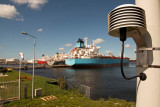
De provincie Noord-Holland is twee jaar geleden in samenwerking met het RIVM, de Waag Society, Tata Steel en lokale overheden het project Hollandse Luchten gestart om de luchtkwaliteit op zwaarder belaste locaties rondom het Noordzeekanaalgebied fijnmazig in kaart te brengen. Hierbij worden inwoners begeleid en opgeleid om de sensoren in elkaar te zetten en de uitkomsten van de metingen te begrijpen. Vervolgens kan er een discussie worden gehouden over het gezamenlijk ontstane beeld van de omgevingskwaliteit.
De Volkskrant schreef een artikel over hoe het meten van de omgevingskwaliteit door inwoners met de jaren is ontwikkeld en wat voor een invloed dit heeft op de discussie rondom leefbaarheid van gebieden.
Stay up to date
Get notified about new updates, opportunities or events that match your interests.

